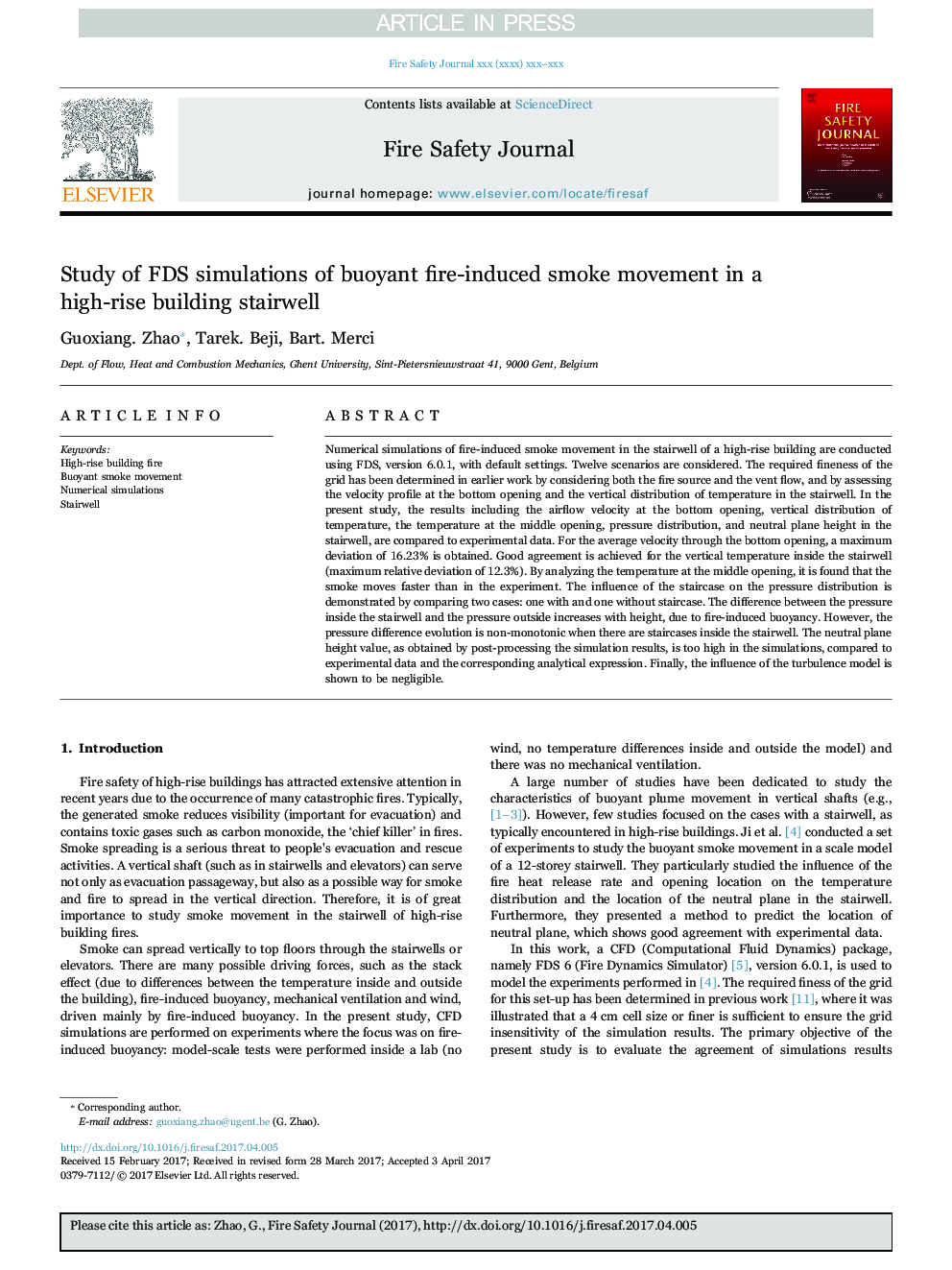| Article ID | Journal | Published Year | Pages | File Type |
|---|---|---|---|---|
| 4920907 | Fire Safety Journal | 2017 | 8 Pages |
Abstract
Numerical simulations of fire-induced smoke movement in the stairwell of a high-rise building are conducted using FDS, version 6.0.1, with default settings. Twelve scenarios are considered. The required fineness of the grid has been determined in earlier work by considering both the fire source and the vent flow, and by assessing the velocity profile at the bottom opening and the vertical distribution of temperature in the stairwell. In the present study, the results including the airflow velocity at the bottom opening, vertical distribution of temperature, the temperature at the middle opening, pressure distribution, and neutral plane height in the stairwell, are compared to experimental data. For the average velocity through the bottom opening, a maximum deviation of 16.23% is obtained. Good agreement is achieved for the vertical temperature inside the stairwell (maximum relative deviation of 12.3%). By analyzing the temperature at the middle opening, it is found that the smoke moves faster than in the experiment. The influence of the staircase on the pressure distribution is demonstrated by comparing two cases: one with and one without staircase. The difference between the pressure inside the stairwell and the pressure outside increases with height, due to fire-induced buoyancy. However, the pressure difference evolution is non-monotonic when there are staircases inside the stairwell. The neutral plane height value, as obtained by post-processing the simulation results, is too high in the simulations, compared to experimental data and the corresponding analytical expression. Finally, the influence of the turbulence model is shown to be negligible.
Keywords
Related Topics
Physical Sciences and Engineering
Engineering
Civil and Structural Engineering
Authors
Guoxiang. Zhao, Tarek. Beji, Bart. Merci,
